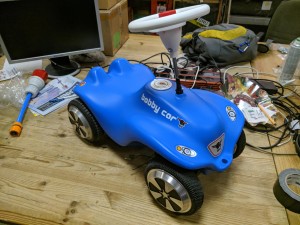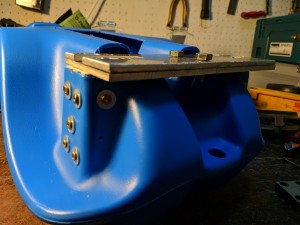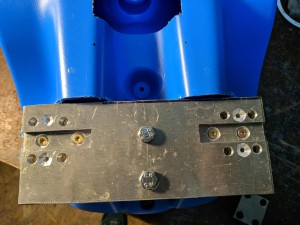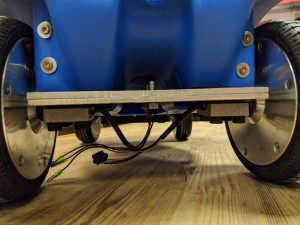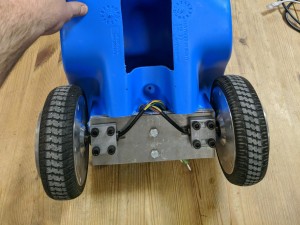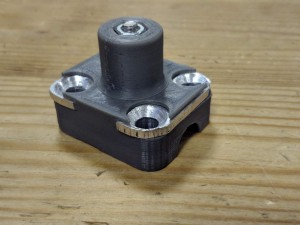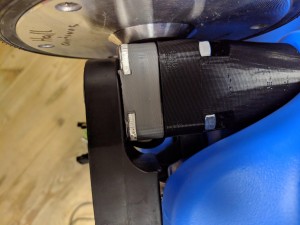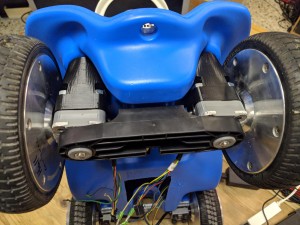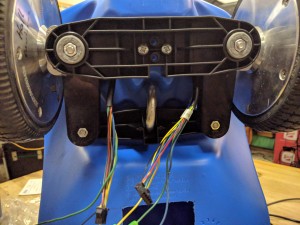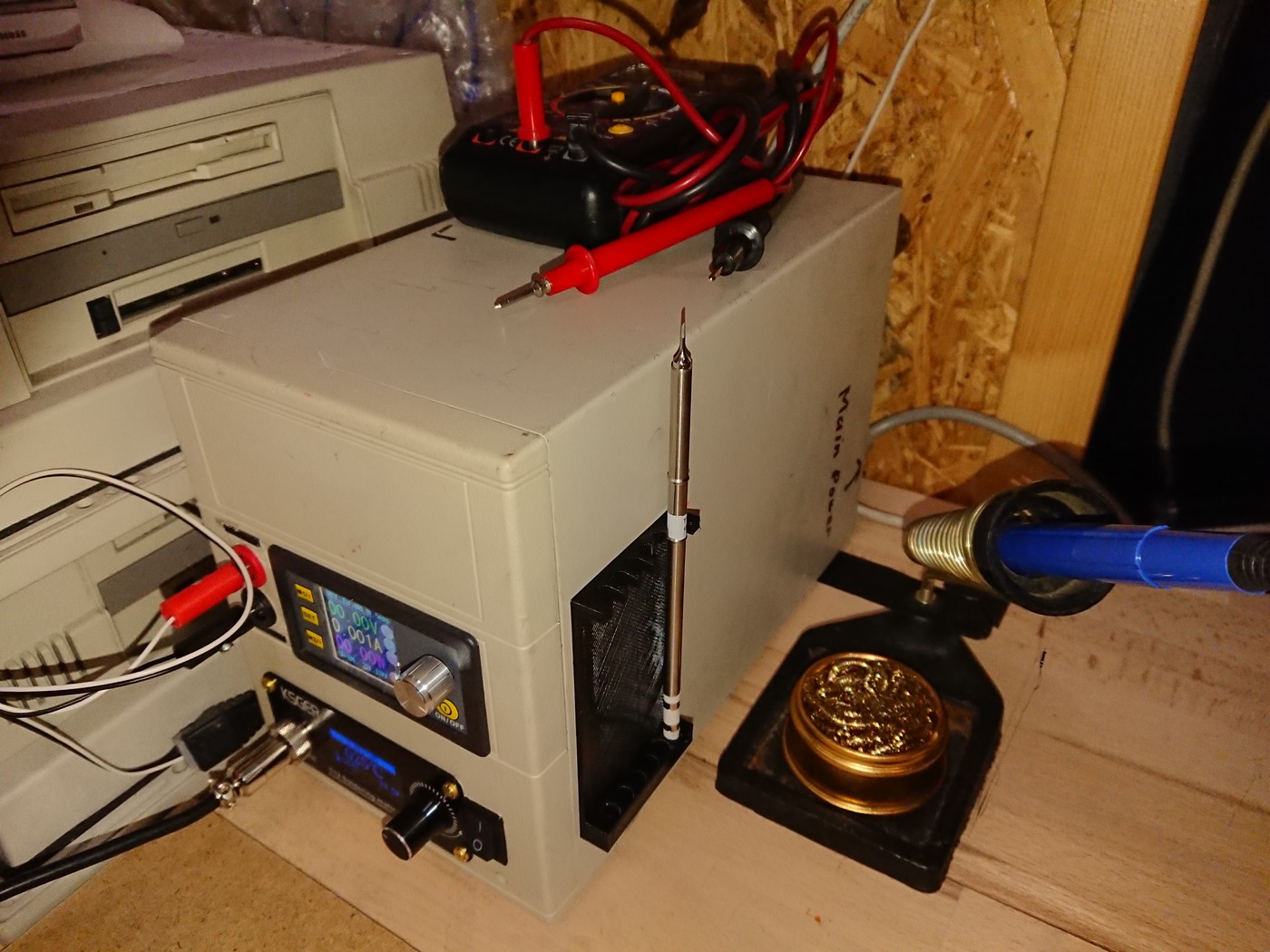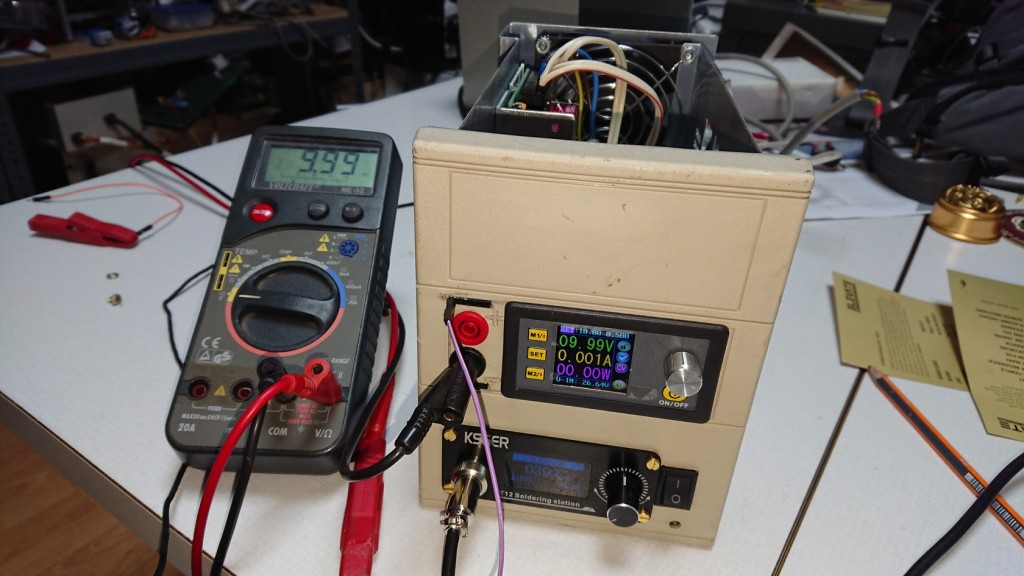Für die Maker Faire und ähnliche Events benötigen wir unbedingt ein Bobbycar mit Allradantrieb. Da es bereits ähnliche Projekte von Lars und Fisch gibt, fiel die Wahl auch bei uns Hoverboard Motoren. Diese können aus defekten Hoverboards ausgebaut werden.
Die hinteren Motoren wurden an einer Alu Platte befestigt:
Die beiden vorderen Motoren haben 3D gedruckte Halterungen bekommen. Sobald wir eine CNC Fräse haben, werden wir die 3D gedruckten Teile durch Frästeile ersetzen. Damit es nicht ganz so schnell kaputt geht, haben wir die 3D gedruckten Teile mit etwas Aluminium verstärkt.
Das Bobbycar bekommt in den nächsten Wochen noch einen Akku, bestehend aus bis zu 180 Stück 18650er Zellen (je nachdem wieviele wir in das Gehäuse bekommen). Auch die Motorcontroller müssen noch mit Joysticks am Lenkrad verbunden werden.

